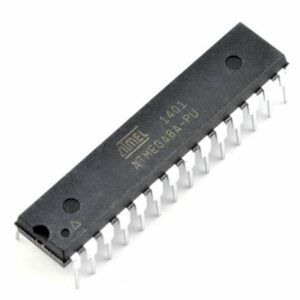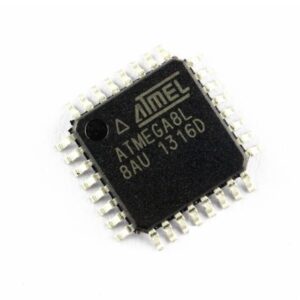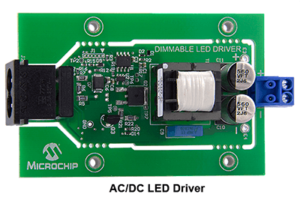 Secured Microcontroller ATmega16A Flash Code Extraction
Secured Microcontroller ATmega16A Flash Code Extraction
Secured Microcontroller ATmega16A Flash Code Extraction needs to readout the program software from atmega16a locked mcu after unlock locked microprocessor atmega16a tamper resistance system;
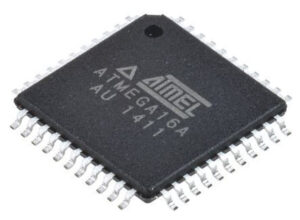
Secured Microcontroller ATmega16A Flash Code Extraction needs to readout the program software from atmega16a locked mcu after unlock locked microprocessor atmega16a tamper resistance system;
When entering Power-down sleep mode while an EEPROM write operation is active, the EEPROM write operation will continue, and will complete before the Write Access time has passed. However, when the write operation is completed, the Oscillator continues running, and as a consequence, the device does not enter Power-down entirely. It is therefore recommended to verify that the EEPROM write operation is completed before entering Power-down.
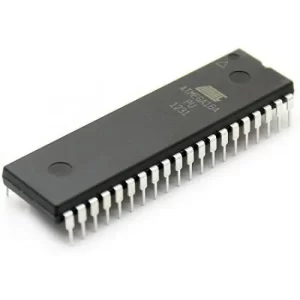
microcontrolador asegurado ATmega16A flash extracción de código necesita para leer el software del programa de atmega16a bloqueado mcu después de desbloquear microprocesador bloqueado atmega16a sistema de resistencia a la manipulación;
During periods of low VCC, the EEPROM data can be corrupted because the supply voltage is too low for the CPU and the EEPROM to operate properly. These issues are the same as for board level systems using EEPROM, and the same design solutions should be applied.
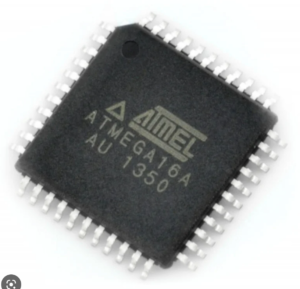
Защищенный микроконтроллер ATmega16A Извлечение флэш-кода необходимо для считывания программного обеспечения из заблокированного микроконтроллера atmega16a после разблокировки заблокированного микропроцессора atmega16a системы защиты от несанкционированного доступа;
An EEPROM data corruption can be caused by two situations when the voltage is too low. First, a regular write sequence to the EEPROM requires a minimum voltage to operate correctly. Sec- ond, the CPU itself can execute instructions incorrectly, if the supply voltage is too low to readout atmega16a ic chip locked code.
EEPROM data corruption can easily be avoided by following this design recommendation:
Keep the AVR RESET active (low) during periods of insufficient power supply voltage. This can be done by enabling the internal Brown-out Detector (BOD). If the detection level of the internal BOD does not match the needed detection level, an external low VCC Reset Protection circuit can be used. If a reset occurs while a write operation is in progress, the write operation will be completed provided that the power supply voltage is sufficient.
 Unlock Encrypted MCU ATmega16 Heximal
Unlock Encrypted MCU ATmega16 Heximal
Unlock Encrypted MCU ATmega16 Heximal will need engineer to attack atmega16 microcontroller protection system then readout embedded source code from atmega16 microprocessor flash memory;
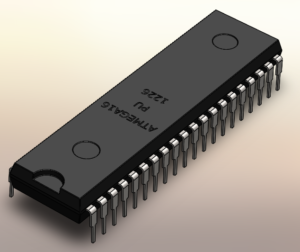
Unlock Encrypted MCU ATmega16 Heximal will need engineer to attack atmega16 microcontroller protection system then readout embedded source code from atmega16 microprocessor flash memory;
The EEPROM Address Registers – EEARH and EEARL – specify the EEPROM address in the 512bytes EEPROM space. The EEPROM data bytes are addressed linearly between 0 and 511. The initial value of EEAR is undefined. A proper value must be written before the EEPROM may be accessed.
For the EEPROM write operation, the EEDR Register contains the data to be written to the EEPROM in the address given by the EEAR Register. For the EEPROM read operation, the EEDR contains the data read out from the EEPROM at the address given by EEAR.
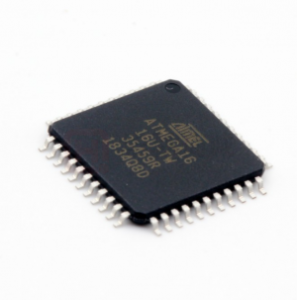
desbloquear cifrado MCU ATmega16 heximal necesitará ingeniero para atacar atmega16 microcontrolador sistema de protección a continuación, leer código fuente embebido de atmega16 microprocesador de memoria flash
The EEMWE bit determines whether setting EEWE to one causes the EEPROM to be written. When EEMWE is set, setting EEWE within four clock cycles will write data to the EEPROM at the selected address If EEMWE is zero to copying atmega165 mcu firmware, setting EEWE will have no effect. When EEMWE has been written to one by software, hardware clears the bit to zero after four clock cycles.
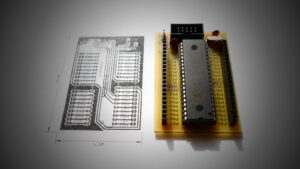
Unlock Encrypted MCU ATmega16 Heximal will need engineer to attack atmega16 microcontroller protection system then readout embedded source code from atmega16 microprocessor flash memory
The EEPROM Write Enable Signal EEWE is the write strobe to the EEPROM. When address and data are correctly set up, the EEWE bit must be written to one to write the value into the EEPROM. The EEMWE bit must be written to one before a logical one is written to EEWE, otherwise no EEPROM write takes place. The following procedure should be followed when writing the EEPROM (the order of steps 3 and 4 is not essential):
- Wait until EEWE becomes zero
- Wait until SPMEN in SPMCR becomes zero
- Write new EEPROM address to EEAR (optional)
- Write new EEPROM data to EEDR (optional)
- Write a logical one to the EEMWE bit while writing a zero to EEWE in EECR
Within four clock cycles after setting EEMWE, write a logical one to EEWE by breaking atmega16 microcontroller fuse bit;
 Deciphering AVR MCU ATmega8A Heximal Data
Deciphering AVR MCU ATmega8A Heximal Data
Deciphering AVR MCU ATmega8A Heximal Data from its flash memory needs to decode microprocessor atmega8a security fuse bit then read software file out from atmega8a microcontroller flash memory;
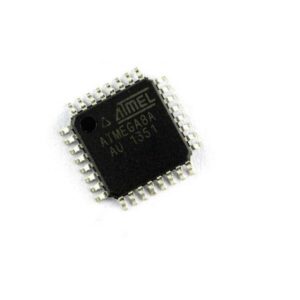
Deciphering AVR MCU ATmega8A Heximal Data from its flash memory needs to decode microprocessor atmega8a security fuse bit then read software file out from atmega8a microcontroller flash memory
Features
· High-performance, Low-power AVR® 8-bit Microcontroller
· Advanced RISC Architecture
– 130 Powerful Instructions – Most Single-clock Cycle Execution
– 32 x 8 General Purpose Working Registers
– Fully Static Operation
– Up to 16 MIPS Throughput at 16 MHz
– On-chip 2-cycle Multiplier
High Endurance Non-volatile Memory segments
– 8K Bytes of In-System Self-programmable Flash program memory
– 512 Bytes EEPROM
– 1K Byte Internal SRAM
– Write/Erase Cycles: 10,000 Flash/100,000 EEPROM
– Data retention: 20 years at 85°C/100 years at 25°C(1)
– Optional Boot Code Section with Independent Lock Bits
· In-System Programming by On-chip Boot Program
· True Read-While-Write Operation
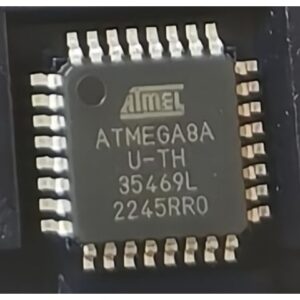
Расшифровка шестнадцатеричных данных AVR MCU ATmega8A из его флэш-памяти требует декодирования бита безопасности микропроцессора atmega8a, а затем считывания файла программного обеспечения из флэш-памяти микроконтроллера atmega8a.
8-bit with 8K Bytes In-System Programmable
– Programming Lock for Software Security
Peripheral Features
– Two 8-bit Timer/Counters with Separate Prescaler, one Compare Mode
– One 16-bit Timer/Counter with Separate Prescaler, Compare Mode, and Capture Mode
– Real Time Counter with Separate Oscillator
– Three PWM Channels
– 8-channel ADC in TQFP and QFN/MLF package
· Eight Channels 10-bit Accuracy
– 6-channel ADC in PDIP package
· Six Channels 10-bit Accuracy
– Byte-oriented Two-wire Serial Interface
– Programmable Serial USART
– Master/Slave SPI Serial Interface
– Programmable Watchdog Timer with Separate On-chip Oscillator
– On-chip Analog Comparator
Special Microcontroller Features
– Power-on Reset and Programmable Brown-out Detection
– Internal Calibrated RC Oscillator
– External and Internal Interrupt Sources
– Five Sleep Modes: Idle, ADC Noise Reduction, Power-save, Power-down, and Standby
I/O and Packages
– 23 Programmable I/O Lines
– 28-lead PDIP, 32-lead TQFP, and 32-pad QFN/MLF
Operating Voltages
– 2.7 – 5.5V for ATmega8A
Speed Grades
– 0 – 16 MHz for ATmega8A
Power Consumption at 4 Mhz, 3V, 25°
 Locked MCU ATmega8L Flash Program Replication
Locked MCU ATmega8L Flash Program Replication
Locked MCU ATmega8L Flash Program Replication needs to break off protective microcontroller atmega8l fuse bit, and then extract firmware from atmega8l microprocessor flash memory;
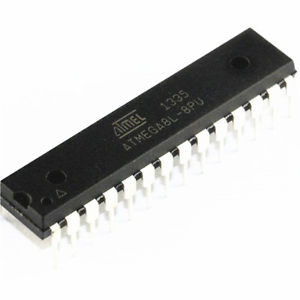
Locked MCU ATmega8L Flash Program Replication needs to break off protective microcontroller atmega8l fuse bit, and then extract firmware from atmega8l microprocessor flash memory;
Depending on the clock selection fuse settings, PB6 can be used as input to the inverting Oscil- lator amplifier and input to the internal clock operating circuit.
Depending on the clock selection fuse settings, PB7 can be used as output from the inverting Oscillator amplifier.
If the Internal Calibrated RC Oscillator is used as chip clock source, PB7..6 is used as TOSC2..1 input for the Asynchronous Timer/Counter2 if the AS2 bit in ASSR is set.
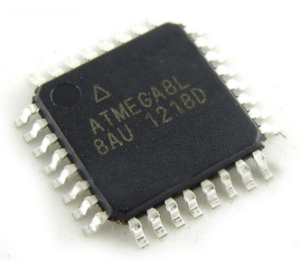
bloqueado MCU ATmega8L flash programa de replicación necesita para romper el microcontrolador protector atmega8l fusible bit, y luego extraer el firmware de la memoria flash del microprocesador atmega8l;
Port C is an 7-bit bi-directional I/O port with internal pull-up resistors (selected for each bit). The Port C output buffers have symmetrical drive characteristics with both high sink and source capability. As inputs, Port C pins that are externally pulled low will source current if the pull-up resistors are activated. The Port C pins are tri-stated when a reset condition becomes active, even if the clock is not running to restore atmega8l microcontroller flash data.
If the RSTDISBL Fuse is programmed, PC6 is used as an I/O pin. Note that the electrical char- acteristics of PC6 differ from those of the other pins of Port C.
If the RSTDISBL Fuse is unprogrammed, PC6 is used as a Reset input. A low level on this pin for longer than the minimum pulse length will generate a Reset, even if the clock is not running. The minimum pulse length is given in Table 15 on page 38. Shorter pulses are not guaranteed to generate a Reset when copying atmega8l microprocessor flash data.
 Break ATmega8 Encrypted MCU Fuse Bit
Break ATmega8 Encrypted MCU Fuse Bit
Break ATmega8 Encrypted MCU Fuse Bit by focus ion beam will help engineer to copy avr chip atmega8 microcontroller flash firmware, after extract embedded firmware from microprocessor atmega8 secured flash memory;
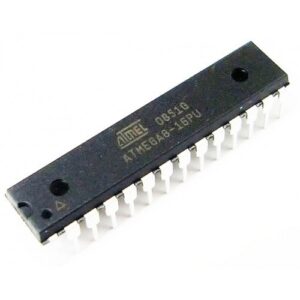
Break ATmega8 Encrypted MCU Fuse Bit by focus ion beam will help engineer to copy avr chip atmega8 microcontroller flash firmware, after extract embedded firmware from microprocessor atmega8 secured flash memory
The boot program can use any interface to download the application program in the Application Flash memory. Software in the Boot Flash Section will continue to run while the Application Flash Section is updated, providing true Read-While-Write operation by recovery atmega8 mcu flash memory content. By combining an 8-bit RISC CPU with In-System Self-Programmable Flash on a monolithic chip, the Atmel ATmega8 is a powerful microcontroller that provides a highly-flexible and cost-effective solution to many embedded control applications.
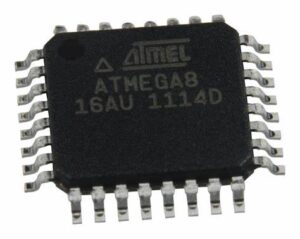
Leer AVR ATMEGA8L Microcontrolador Código Protegido necesita ingeniería inversa atmega8l mcu sistema de resistencia a la manipulación y, a continuación, recuperar el firmware embebido de atmega8l microprocesador de memoria flash;
The ATmega8 is supported with a full suite of program and system development tools, including C compilers, macro assemblers, program simulators, and evaluation kits.
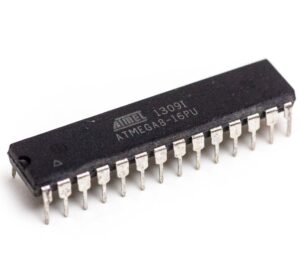
secured atmega8 mcu protection cracking can recover heximal from microcontroller atmega8 flash memory
Typical values contained in this datasheet are based on simulations and characterization of other AVR microcontrollers manufactured on the same process technology. Minimum and Maxi- mum values will be available after the device is characterized.
Port B is an 8-bit bi-directional I/O port with internal pull-up resistors (selected for each bit). The Port B output buffers have symmetrical drive characteristics with both high sink and source capability. As inputs, Port B pins that are externally pulled low will source current if the pull-up resistors are activated. The Port B pins are tri-stated when a reset condition becomes active, even if the clock is not running.
 Break Microchip PIC12F752 Locked MCU Flash Memory
Break Microchip PIC12F752 Locked MCU Flash Memory
Break Microchip PIC12F752 Locked MCU Flash Memory protection over its fuse bit and readout embedded heximal program from PIC12F752 Microcontroller for cloning;
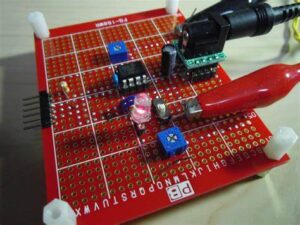
Break Microchip PIC12F752 Locked MCU Flash Memory protection over its fuse bit and readout embedded heximal program from PIC12F752 Microcontroller for cloning;
For oscillator modes involving a crystal or resonator (HS, HSPLL, LP or XT), the situation is somewhat dif- ferent. Since the oscillator may require a start-up time considerably longer than the FCSM sample clock time, a false clock failure may be detected.
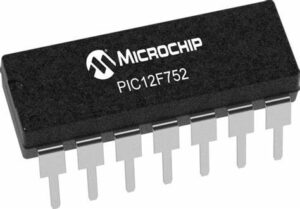
romper microchip PIC12F752 bloqueado MCU protección de memoria flash sobre su bit de fusible y la lectura incrustado programa heximal de PIC12F752 Microcontrolador para la clonación;
To prevent this, the internal oscillator block is automatically configured as the system clock and functions until the primary clock is stable (the OST and PLL timers have timed out) to readout pic12f509 flash memory file. This is identical to Two-Speed Start-up mode. Once the primary clock is stable, the INTRC returns to its role as the FSCM source.
As noted in Section 19.3.1 “Special Considerations for Using Two-Speed Start-up”, it is also possible to select another clock configuration and enter an alter- nate power managed mode while waiting for the primary system clock to become stable. When the new powered managed mode is selected, the primary clock is disabled.
The same logic that prevents false oscilla- tor failure interrupts on POR or wake from Sleep will also prevent the detection of the oscillator’s failure to start at all following these events. This can be avoided by monitoring the OSTS bit and using a timing routine to determine if the oscillator is taking too long to start. Even so, no oscillator failure interrupt will be flagged.
 Recover Locked Microcontroller PIC12F629 Flash Data
Recover Locked Microcontroller PIC12F629 Flash Data
Recover Locked Microcontroller PIC12F629 Flash Data needs to attack secured MCU PI12F629 protection system and then read out heximal archive file from original microprocessor PIC12F629;
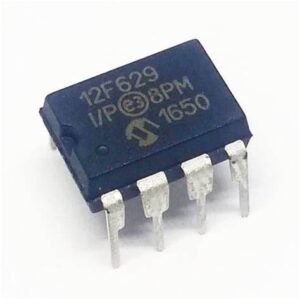
Recuperar microcontrolador bloqueado PIC12F629 Flash Los datos deben descifrar el bit de fusible de seguridad de MCU asegurado PIC12F629 y luego leer el heximal incrustado de la microcomputadora bloqueada PIC12F629
The primary clock source may never become ready during start-up. In this case, operation is clocked by the INTOSC multiplexer. The OSCCON register will remain in its Reset state until a power managed mode is entered.
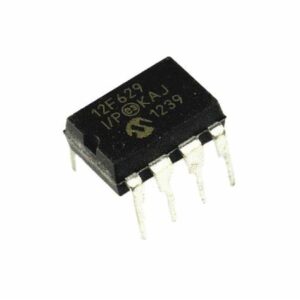
para recuperar los datos flash del microcontrolador bloqueado PIC12F629 es necesario atacar el sistema de protección del MCU PI12F629 y luego leer el archivo heximal del microprocesador original PIC12F629;
Entering a power managed mode by loading the OSCCON register and executing a SLEEP instruction will clear the Fail-Safe condition to clone microchip pic12f510 microcontroller flash program. When the Fail-Safe condition is cleared, the clock monitor will resume monitoring the peripheral clock.
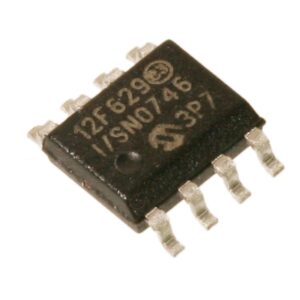
Kilitli Mikrodenetleyiciyi Kurtar PIC12F629 Flash Verilerinin güvenli MCU PI12F629 koruma sistemine saldırması ve ardından orijinal mikroişlemci PIC12F629’dan onaltılık arşiv dosyasını okuması gerekir
As previously mentioned, entering a power managed mode clears the Fail-Safe condition. By entering a power managed mode, the clock multiplexer selects the clock source selected by the OSCCON register to read microcontroller pic12f509 flash heximal. Fail-Safe monitoring of the power managed clock source resumes in the power managed mode.
 Secured PIC12F683 Microprocessor Heximal Code Recovery
Secured PIC12F683 Microprocessor Heximal Code Recovery
Secured PIC12F683 Microprocessor Heximal Code Recovery is a process to break pic12f683 mcu security fuse bit then read the embedded firmware out from microcontroller pic12f683;
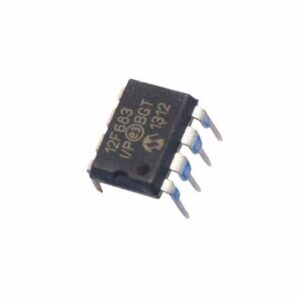
Secured PIC12F683 Microprocessor Heximal Code Recovery è un processo per rompere il bit del fusibile di sicurezza mcu pic12f683, quindi leggere il firmware incorporato dal microcontrollore pic12f683
Clock failure is tested for on the falling edge of the sample clock. If a sample clock falling edge occurs while CM is still set, a clock failure has been detected. This causes the following:
- the FSCM generates an oscillator fail interrupt by setting bit, OSCFIF (PIR2<7>);
- the system clock source is switched to the internal oscillator block (OSCCON is not updated to show the current clock source – this is the Fail-Safe condition); and
- the WDT is
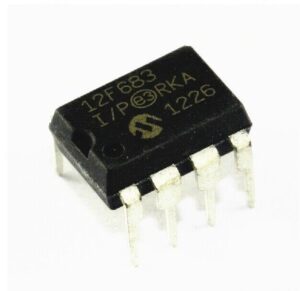
asegurado PIC12F683 microprocesador de recuperación de código heximal es un proceso para romper pic12f683 mcu fusible de seguridad de bits a continuación, leer el firmware embebido a cabo desde el microcontrolador pic12f683;
Since the postscaler frequency from the internal oscil- lator block may not be sufficiently stable, it may be desirable to select another clock configuration and enter an alternate power managed mode when breaking PIC18F242 MCU flash memory (see Section 19.3.1 “Special Considerations for Using Two-Speed Start-up” and Section 3.1.3 “Multiple Sleep Commands” for more details). This can be done to attempt a partial recovery, or execute a controlled shutdown.
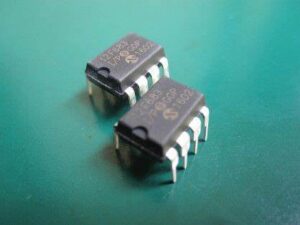
Güvenli PIC12F683 Mikroişlemci Onaltılı Kod Kurtarma, pic12f683 mcu güvenlik sigorta bitini kırmak ve ardından gömülü bellenimi mikrodenetleyiciden okumak için bir süreçtir pic12f683
To use a higher clock speed on wake-up, the INTOSC or postscaler clock sources can be selected to provide a higher clock speed by setting bits, IFRC2:IFRC0 when PIC18F252 microcontroller flash memory program recovery, immediately after Reset. For wake-ups from Sleep, the INTOSC or postscaler clock sources can be selected by setting IFRC2:IFRC0 prior to entering Sleep mode.
 Unlock Microchip PIC12F609 Processor Flash Content
Unlock Microchip PIC12F609 Processor Flash Content
Unlock Microchip PIC12F609 Processor Flash Content and extract heximal file to new Microcontroller pic12f609;
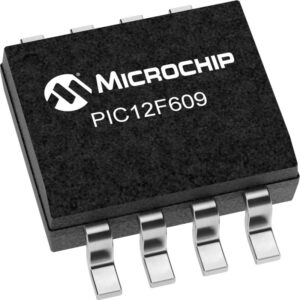
Desbloquee el contenido flash del procesador Microchip PIC12F609 y extraiga el archivo heximal al nuevo microcontrolador pic12f609;
This would allow an application to briefly wake-up, perform routine “housekeeping” tasks and return to Sleep before the device starts to operate from the primary oscillator.
User code can also check if the primary clock source is currently providing the system clocking by checking the status of the OSTS bit (OSCCON<3>). If the bit is set, the primary oscillator is providing the system clock. Otherwise, the internal oscillator block is providing the clock during wake-up from Reset or Sleep mode.
The Fail-Safe Clock Monitor (FSCM) allows the micro- controller to continue operation, in the event of an external oscillator failure, by automatically switching the system clock to the internal oscillator block by extracting pic12f617 microcontroller source code. The FSCM function is enabled by setting the Fail-Safe Clock Monitor Enable bit, FSCM (CONFIG1H<6>).
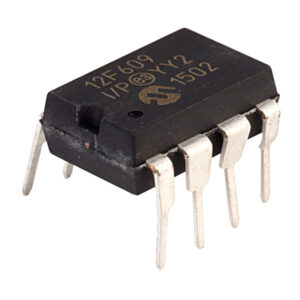
Odblokuj zawartość Flash procesora Microchip PIC12F609 i wyodrębnij plik szesnastkowy do nowego mikrokontrolera pic12f609
When FSCM is enabled, the INTRC oscillator runs at all times to monitor clocks to peripherals and provide an instant backup clock in the event of a clock failure. Clock monitoring (shown in Figure 19-3) is accom- plished by creating a sample clock signal, which is the INTRC output divided by 64 when breaking off the protection over pic16f627 mcu fuse bit. This allows ample time between FSCM sample clocks for a peripheral clock edge to occur. The peripheral system clock and the sample clock are presented as inputs to the Clock Monitor latch (CM). The CM is set on the falling edge of the system clock source, but cleared on the rising edge of the sample clock.
 Crack Secured Microcontroller PIC12LF1612 Protection
Crack Secured Microcontroller PIC12LF1612 Protection
Crack Secured Microcontroller PIC12LF1612 Protection and extract embedded binary file from PIC12F617 MCU;
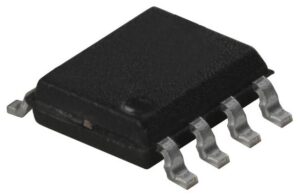
Crack Secured Microcontroller PIC12LF1612 Proteção e extração de arquivo binário embutido do PIC12F617 MCU
Because the OSCCON register is cleared on Reset events, the INTOSC (or postscaler) clock source is not initially available after a Reset event; the INTRC clock is used directly at its base frequency. To use a higher clock speed on wake-up, the INTOSC or postscaler clock sources can be selected to provide a higher clock speed by setting bits, IFRC2:IFRC0, immediately after Reset. For wake-ups from Sleep, the INTOSC or post- scaler clock sources can be selected by setting IFRC2:IFRC0 prior to entering Sleep mode.
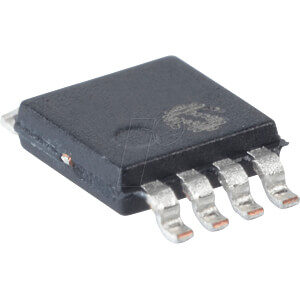
Взлом защищенного микроконтроллера PIC12LF1612 Защита и извлечение встроенного бинарного файла из микроконтроллера PIC12F617
In all other power managed modes, Two-Speed Start-up is not used. The device will be clocked by the currently selected clock source until the primary clock source becomes available. The setting of the IESO bit is ignored to unlock microchip pic12f615 flash memory.
While using the INTRC oscillator in Two-Speed Start- up, the device still obeys the normal command sequences for entering power managed modes, including serial SLEEP instructions (refer to Section 3.1.3 “Multiple Sleep Commands”). In practice, this means that user code can change the SCS1:SCS0 bit settings and issue SLEEP commands before the OST times out.
